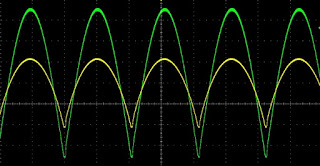TAG | led flcker
13
80% of UK school kids ‘at flicker risk’ from old lights
Comments off · Posted by admin in LED, LED panels

Professor Wilkins says it’s ‘plain enough’ that bad flicker from magnetic ballasts in schools can impair learning. A switch to high frequency gear, or LED luminaires, would fix the problem.

Because of the way magnetic ballasts manipulate the 50 Hz sinusoidal waveform of the input voltage, they deliver a light output that flickers at 100 Hz. This frequency is in the danger zone of harmful flicker, which could impair learning.
‘Unfortunately 80 per cent of our schools are still lit with lighting that flickers at 100 hertz’, he told a Lux conference on lighting fixture design in London this month. ‘It causes headaches and its causes anxiety. It’s there all the time. Whether it impairs their learning, seems to me to be plain enough.’
Although people can only directly perceive fluctuations at frequencies up to about 70 Hz, human vision is adversely affected by light fluctuations up to 200 Hz. Visual performance is especially degraded by flicker in the 100 Hz to 200 Hz range and in general, younger people are likely to perceive lower level and higher frequency flicker than older observers.

Professor Arnold Wilkins says that 100 Hz is present all the time under magnetic ballasted fluorescent fittings in schools. ‘Whether it impairs their learning, seems to me to be plain enough’ he told the Lighting Fixture Design Conference in London.
‘100 hertz should be avoided.’ The solution is to upgrade to high frequency control gear for fluorescent or LED. ‘It’s a simple as that.’
Flicker at 100 Hz is prevalent in older fluorescent light fittings with magnetic ballasts which were popularly installed in schools before the introduction of high-frequency electronic control gear and LED panels. Typically, magnetically ballasted fluorescent luminaires will exhibit flicker of between 10 and 20 per cent of output, and a ‘compact flicker degree’, or CFD, of over 20 per cent. Prolonged exposure leads to eyestrain, headaches and anxiety.
Professor Wilkins has a number of high profile awards to his name, including the Leon Gaster Memorial Award, the Walsh Weston Memorial Award and the Owen Aves Medal and has been made a honorary fellow of the College of Optometry.
LED Ceiling panels are available from Novel Energy Lighting. We stock multiple quality brands, such as Thorn, Ansell, Philips, and MEGE:
flicker free · led 600x600 · LED Ceiling Panels · led flcker · led panels · low flicker · Novel Energy Lighting · school lighting

